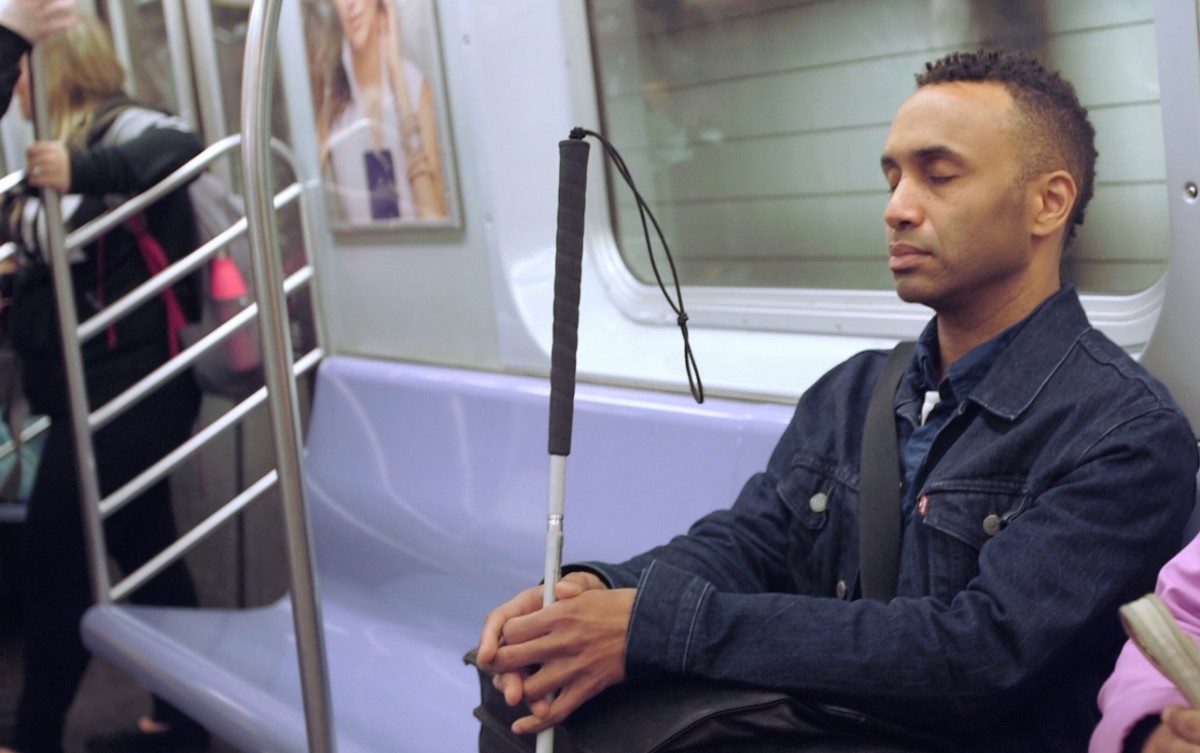Rodney Evans (“Brother to Brother,” which won the Special Jury Prize at Sundance in 2004) returns to the screen with his deeply personal documentary “Vision Portraits.” Tracking four visually impaired artists suffering from RP (retinitis pigmentosa), including the filmmaker himself, Evans questions how these artists go about creating in visual mediums when their own sight is rapidly deteriorating. Oscillating between traditional documentary and experimental, subjective attempts to capture what it’s like to be impaired, Evans creates a moderately successful portrait of, what the film references as, the space between seeing and not.
The most successful element of the doc are the more mundane talking head/day-in-the-life segments, in which Evans interviews a number of different artists working in various mediums. There is photographer John Dugdale, dancer Kayla Hamilton, and writer Ryan Knighton. All were surprised with diagnoses of degrading vision, forced to rethink their mediums, and change their respective work environments to accommodate their loss of sight. This chronicling, split into chapters, fortunately, provides the bulk of “Vision Portraits’” relatively short run-time.
Dugdale’s surprise diagnosis actually made him a more prolific photographer, working through his disability through his medium. While Knighton, who we see monologuing about his impairment, has centralized his story within his writing, including penning a memoir about his diagnosis (his segment, in many ways, recalling Spalding Gray’s “Gray’s Anatomy”). The connecting tissue between all these artists, including Evans, is how having to rethink the way in which they process their art form has made them more conscious of other elements. As Knighton notes, because he listens to all his stories now, he has tapped into a more oral, instead of visual, method of writing. Evans even makes a point that his lack of peripheral vision has allowed him to focus on centralizing his filmic compositions, preferring close-up shots.
The four segments in which Evans follows these people through their daily lives poses a number of questions about the importance of sight in these mediums. Yet only when Evans switches to literal poetic interludes – questioning, among other things, what it’s like to exist in the liminal space between seeing and not seeing – does the film becomes too experimental for its own good. “Visual Portraits,” in some ways, doesn’t trust the viewer to come to these broader philosophical questions themselves, literalizing what these artists have talked about: the adjustments necessary to work in their mediums, but also questioning how to incorporate other senses in predominantly visual mediums.
Evans need to literalize these questions is, in the end, to the detriment of the overall film. The fragmentary sentences, POV shots, and re-creations of moments from his own life, come across as forced, as if a traditional documentary approach weren’t enough to fill a feature-length film. This problem is compounded by the fact that the documentary makes a point to disconnect these two disjunctive forms. It would be one thing if the experimental segments were integrated into the documentary, but often they feel like interludes, taking away from the artists and their stories.
Further, Evans resists drawing thematic connections between the artists. Instead, the film moves, in a final chapter, to his own personal attempts to gain back vision through an experimental procedure in Germany. By compartmentalizing the film so much, “Vision Portraits” becomes a series of disparate sections, never gelling together as a complete piece. Even with this fragmentary approach, however, “Vision Portraits” lives up to its title, presenting a series of fascinating case studies in how the artistic spirit, and the need to create, can overcome anything. [B-]





